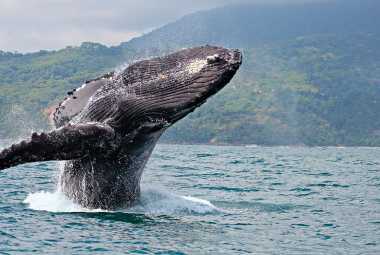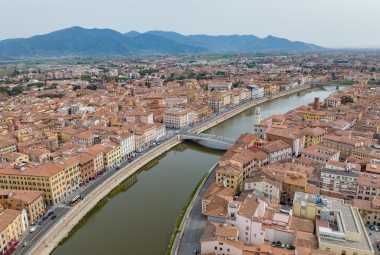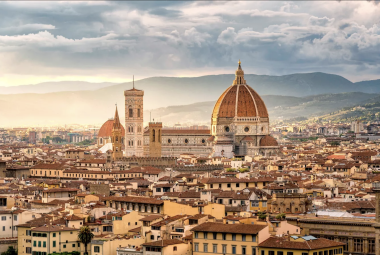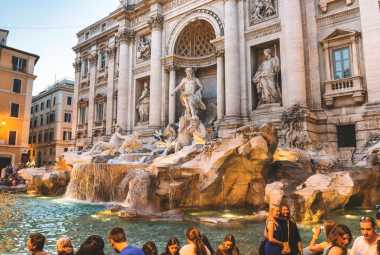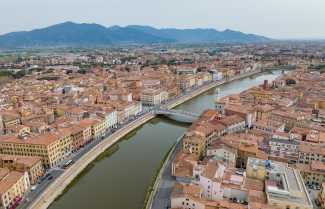Image by henleyglobal.com
*Vacation Mode is a for-profit site. It contains paid banner advertisements that are generated and managed by a third-party network. This site also includes relevant affiliate links (both in the content and on the sidebar) all of which we do our best to clearly mark as such.
Quick Summary
-
History of St. Lucia:
- Rich history influenced by Arawak and Carib inhabitants, European colonial powers (France and Britain), and the legacy of slavery and plantation economy.
- Historic sites: Pigeon Island National Landmark, Fort Rodney, and the Pitons.
-
Original Inhabitants:
- Arawak and Carib tribes known for agriculture, pottery-making, fishing, hunting, shamanism, and spiritual beliefs.
-
Colonial Rule:
- France and Britain as main colonial powers, influencing language, cuisine, architecture, and social structure.
-
Geography:
- Features lush rainforests, volcanic peaks, coastal landscapes, and the iconic twin peaks of the Pitons.
- Main cities and towns: Castries, Soufrière, Rodney Bay.
-
Climate:
- Tropical climate with average temperatures ranging from mid-70s to low 80s Fahrenheit.
- Dry season (December to May) and rainy season (June to November).
-
Popular Attractions:
- The Pitons, Diamond Botanical Gardens, Pigeon Island National Landmark.
- Must-see beaches: Reduit Beach, Anse Chastanet, Sugar Beach.
-
Activities:
- Snorkeling, hiking, zip-lining, cooking classes, street markets, Caribbean festivals, boat tours.
-
Culture:
- Blend of African, French, and Caribbean traditions in music, art, cuisine, and festivals.
- Celebrations: Saint Lucia Jazz Festival, La Rose, La Marguerite festivals.
-
Traditional Foods:
- Green fig and saltfish, plantain, bouyon, dasheen, breadfruit, callaloo.
-
Major Festivals:
- St. Lucia Jazz Festival, La Rose, and La Marguerite festivals, highlighting music, dance, and cultural heritage.
-
Accommodations:
- Luxurious hotels and resorts such as Jade Mountain, Ladera Resort, Sugar Beach.
- Best areas to stay: Soufrière (scenic beauty), Rodney Bay (nightlife), Marigot Bay (tranquility).
-
Frequently Asked Questions:
- Top activities: snorkeling, hiking, visiting Sulphur Springs, beach relaxation.
- Best time to visit: December to April.
- Visa requirements vary by nationality; U.S. citizens can stay up to 6 weeks without a visa.
- Currency: Eastern Caribbean dollar (XCD); U.S. dollars widely accepted.
- Drinking tap water is not recommended; bottled water is advisable.
Curious about the history, geography, attractions, culture, and accommodations in St. Lucia? Look no further! This article covers the most commonly asked questions about this stunning Caribbean island. From the original inhabitants to the top hotels and resorts, we've got you covered. So, if you want to know more about the must-see beaches, traditional foods, and major festivals in St. Lucia, keep reading for all the best insights and recommendations.
What is the History of St. Lucia?
St. Lucia boasts a rich history that has been shaped by various influences over the centuries, making it a fascinating destination for travelers seeking cultural insights.
The island's history is marked by a series of shifts in power, from its original Arawak and Carib inhabitants to subsequent European colonial powers. The French and British both ruled the island at different times, leaving their marks on its culture and architecture. The legacy of slavery and the plantation economy also played a significant role in shaping St. Lucia's past.
Today, visitors can explore historic sites such as Pigeon Island National Landmark, Fort Rodney, and the Pitons, all of which offer a glimpse into the island's vibrant heritage.
Who Were the Original Inhabitants of St. Lucia?
The original inhabitants of St. Lucia were the Arawak and Carib tribes, who lived on the island long before European colonization, leaving a significant cultural legacy that is still evident today.
They were skilled in agriculture, cultivating crops such as cassava, maize, and sweet potatoes, which formed the foundation of their diet. The Arawak were known for their pottery-making expertise, creating intricate designs and vessels.
Meanwhile, the Carib people were skilled seafarers and hunters, relying on fishing and hunting to sustain their communities. Their traditional practices, like shamanism and spiritual beliefs, have influenced the island's folklore and customs, contributing to the rich tapestry of St. Lucian culture that has evolved over centuries.
What Countries Have Ruled Over St. Lucia?
Throughout its history, St. Lucia has been ruled by various colonial powers, including France and Britain, each leaving a distinctive mark on the island's cultural tapestry.
French rule in St. Lucia began in the mid-17th century, and the island served as a crucial strategic point in the Caribbean due to its fertile lands and natural resources. The French influence is evident in the island's language, cuisine, and architecture, blending with the rich African and indigenous Caribbean traditions.
When the British gained control in the early 19th century, they implemented a system of colonial governance that included the introduction of English as the official language and the establishment of plantation economies. This period saw significant changes in land ownership and social structure, shaping St. Lucia's modern society.
What is the Geography of St. Lucia?
St. Lucia's geography is characterized by lush rainforests, volcanic peaks, and stunning coastal landscapes, offering visitors a diverse and picturesque environment to explore and enjoy.
Tucked in the eastern Caribbean Sea, this tropical paradise boasts a blend of natural wonders that captivate every traveler. From the iconic twin peaks of the Pitons rising dramatically from the sea to the enchanting waterfalls cascading through the verdant terrain, St. Lucia presents a postcard-perfect setting at every turn. The island's topographical diversity, with its rolling hills, secluded beaches, and coral reefs teeming with marine life, ensures endless opportunities for outdoor adventures and relaxation in a breathtaking setting.
What are the Main Cities and Towns in St. Lucia?
St. Lucia is home to vibrant cities and charming towns such as Castries, Soufrière, and Rodney Bay, each offering a unique blend of local culture, hospitality, and attractions for visitors.
- Castries, the bustling capital of St. Lucia, is known for its vibrant markets, historic architecture, and the majestic Derek Walcott Square.
- Soufrière, nestled between the iconic twin peaks of the Pitons, is famous for its natural hot springs and the stunning Diamond Falls Botanical Gardens.
- Rodney Bay, a popular tourist hub, boasts beautiful beaches, trendy restaurants, and the vibrant Rodney Bay Marina, a favorite spot for yacht enthusiasts.
These urban centers showcase the diverse charm and rich heritage that define St. Lucia's appeal to travelers worldwide.
What is the Climate Like in St. Lucia?
St. Lucia enjoys a tropical climate characterized by warm temperatures, abundant sunshine, and occasional rainfall, creating an ideal setting for year-round travel and outdoor activities.
The average temperature in St. Lucia ranges from the mid-70s to low 80s Fahrenheit throughout the year, offering visitors a pleasantly warm environment to explore the island's natural beauty. The island experiences two main seasons: the dry season, from December to May, and the rainy season, from June to November. The best time to visit St. Lucia is during the dry season when the weather is more predictable and conducive to outdoor adventures such as hiking the majestic Pitons or enjoying water activities along the stunning coastline.
What are the Popular Attractions in St. Lucia?
St. Lucia is renowned for its captivating attractions, including the iconic Pitons, lush botanical gardens, and pristine beaches, offering visitors a myriad of experiences to cherish.
- The majestic Pitons, a UNESCO World Heritage Site, tower dramatically along the coastline, providing breathtaking views for hikers and nature enthusiasts.
- Exploring the Diamond Botanical Gardens allows travelers to immerse themselves in a tropical oasis filled with vibrant flora and the enchanting Diamond Waterfall.
- Don't miss a visit to the historic Pigeon Island National Landmark, where remnants of military buildings narrate tales of the island's past.
- From the vibrant local markets to the vibrant carnival celebrations, St. Lucia seamlessly blends its natural beauty with rich cultural experiences.
What are the Must-See Beaches in St. Lucia?
St. Lucia boasts a collection of stunning beaches such as Reduit Beach, Anse Chastanet, and Sugar Beach, each offering pristine sands, crystal-clear waters, and breathtaking views for beach enthusiasts.
These beaches are not just idyllic settings for sunbathing; they also present a plethora of water activities to engage in. Reduit Beach, with its calm waters, is perfect for swimming and snorkeling, while Anse Chastanet's rugged coastline makes it ideal for diving enthusiasts. The luxurious Sugar Beach, nestled between the Pitons, offers a fantastic backdrop for relaxing and enjoying water sports like paddleboarding and kayaking. The natural beauty of these beaches, coupled with their unique features, make them must-visit destinations for those seeking the ultimate beach experience in St. Lucia.
What are the Best Activities to Do in St. Lucia?
St. Lucia provides a plethora of exciting activities for travelers, including snorkeling in coral reefs, hiking through rainforests, and exploring historic sites, ensuring a memorable and adventurous experience.
For those seeking a thrilling adventure, zip-lining through the lush canopy of the rainforest offers an adrenaline-pumping experience.
Culinary enthusiasts can indulge in local flavors by taking a cooking class to learn traditional recipes.
To immerse oneself in the rich cultural heritage of St. Lucia, a visit to the colorful street markets and attending vibrant Caribbean festivals is highly recommended.
For nature lovers, a boat tour to spot majestic whales or nesting sea turtles is a must-do activity during their stay on this picturesque island.
What is the Culture of St. Lucia Like?
St. Lucia's culture is a vibrant tapestry of diverse influences, blending African, French, and Caribbean traditions into a rich tapestry of music, art, cuisine, and festivals.
The island's traditions reflect a deep reverence for its heritage, with colorful artistic expressions seen in the intricate craftsmanship of handmade goods and the rhythmic beats of traditional music echoing through the streets.
St. Lucian cuisine, with its fusion of flavors and spices, tantalizes the taste buds, offering a gastronomic journey that delights both locals and visitors alike.
Festive celebrations such as the lively Saint Lucia Jazz Festival and the exuberant La Rose and La Marguerite flower festivals showcase the island's vibrant spirit and sense of community.
What are the Traditional Foods in St. Lucia?
St. Lucia offers a culinary delight with traditional dishes like green fig and saltfish, plantain, and bouyon, showcasing a blend of flavors and influences that reflect the island's diverse cultural heritage.
Locally known as 'fig', green fig and saltfish is a beloved breakfast staple made with boiled green bananas served alongside a sautéed salted codfish mixture. The sweetness of ripe plantains balanced with savory flavors is a common side dish throughout the island, often enjoyed fried or cooked in stews.
Bouyon, a hearty soup packed with local vegetables, meats, and spices, is a comforting dish loved for its rich flavors and nourishing qualities. St. Lucian cuisine also incorporates ingredients like dasheen, breadfruit, and callaloo, showcasing the island's vibrant culinary traditions.
What are the Major Festivals and Celebrations in St. Lucia?
St. Lucia is renowned for vibrant festivals such as the St. Lucia Jazz Festival, La Rose, and La Marguerite, where locals and visitors come together to celebrate music, dance, and cultural heritage.
These festivals showcase the rich cultural tapestry of the island, with a blend of African, French, and Caribbean influences evident in the music, dance, and traditional rituals. The St. Lucia Jazz Festival, held annually, attracts world-class musicians and music enthusiasts alike, creating a lively atmosphere that reverberates throughout the island. La Rose and La Marguerite, rooted in historical traditions, honor the island's colonial past and celebrate the resilience and unity of the community through vibrant parades, singing, and flower crowning ceremonies.
What are the Best Accommodations in St. Lucia?
St. Lucia offers a range of luxurious accommodations, from boutique hotels to all-inclusive resorts, ensuring visitors a comfortable and memorable stay amidst the island's natural beauty.
Whether you seek a romantic escape or a family-friendly retreat, St. Lucia has something for every traveler. The upscale hotels along the coastline provide stunning ocean views and world-class amenities, perfect for those seeking opulence and relaxation. Boutique resorts tucked away in lush tropical gardens offer a more intimate and personalized experience, ideal for guests looking for a serene atmosphere. For a truly unique stay, consider booking one of the charming lodgings nestled in the heart of the island's vibrant culture, where you can immerse yourself in the local hospitality and traditions.
What are the Top Hotels and Resorts in St. Lucia?
St. Lucia boasts a selection of top-rated hotels and resorts like Jade Mountain, Ladera Resort, and Sugar Beach, providing luxurious amenities, stunning views, and exceptional service for discerning travelers.
In St. Lucia, Jade Mountain stands out for its exquisite infinity pool suites that offer breathtaking views of the Pitons and the Caribbean Sea. Ladera Resort, nestled in the rainforest, entices guests with its open-air rooms, creating a unique and harmonious connection with nature. Sugar Beach, located on the white sandy shores of the UNESCO World Heritage-listed Pitons, offers a tranquil escape with its world-class spa and gourmet dining options.
These luxury accommodations showcase the premium hospitality and upscale lodging options that set St. Lucia apart as a top destination for those seeking a refined travel experience.
What are the Best Areas to Stay in St. Lucia?
- Selecting the best area to stay in St. Lucia depends on preferences, with options like Soufrière for scenic beauty, Rodney Bay for nightlife, and Marigot Bay for tranquility and seclusion.
Soufrière, nestled between the iconic Pitons, offers luxurious resorts and breathtaking views perfect for nature lovers. Relax in mineral-rich hot springs or explore Soufrière's vibrant market for local crafts.
Rodney Bay boasts a lively social scene with trendy bars and restaurants along the marina. Visitors can enjoy water sports or shop at Rodney Bay Village.
On the other hand, Marigot Bay enchants visitors with its serene atmosphere, ideal for a romantic retreat or a peaceful escape. Enjoy sunset cruises or indulge in spa treatments while surrounded by lush greenery.
Frequently Asked Questions
What are the top activities to do in St. Lucia?
Some of the most popular activities in St. Lucia include snorkeling, hiking to the Pitons, visiting the Sulphur Springs, and relaxing on the beaches.
What is the best time to visit St. Lucia?
The best time to visit St. Lucia is between December and April, when the weather is dry and temperatures are mild. However, travelers should keep in mind that this is peak tourist season and prices may be higher.
Do I need a visa to visit St. Lucia?
It depends on your nationality. U.S. citizens do not need a visa for stays of up to 6 weeks, while citizens of other countries may need to obtain a visa before traveling to St. Lucia. It is important to check the visa requirements before booking your trip.
What currency is used in St. Lucia?
The official currency of St. Lucia is the Eastern Caribbean dollar (XCD), but U.S. dollars are widely accepted. It is recommended to have some local currency for smaller purchases and to avoid exchange fees.
Is it safe to drink the tap water in St. Lucia?
No, it is not recommended to drink tap water in St. Lucia. It is best to stick to bottled water, which is widely available. Also, avoid using ice in drinks that may have been made with tap water.
What is the local cuisine like in St. Lucia?
The cuisine in St. Lucia is a fusion of African, Indian, French, and British influences. Some popular dishes include plantains, callaloo soup, and seafood dishes like grilled fish and lobster. Don't forget to try the local rum and Piton beer as well!


